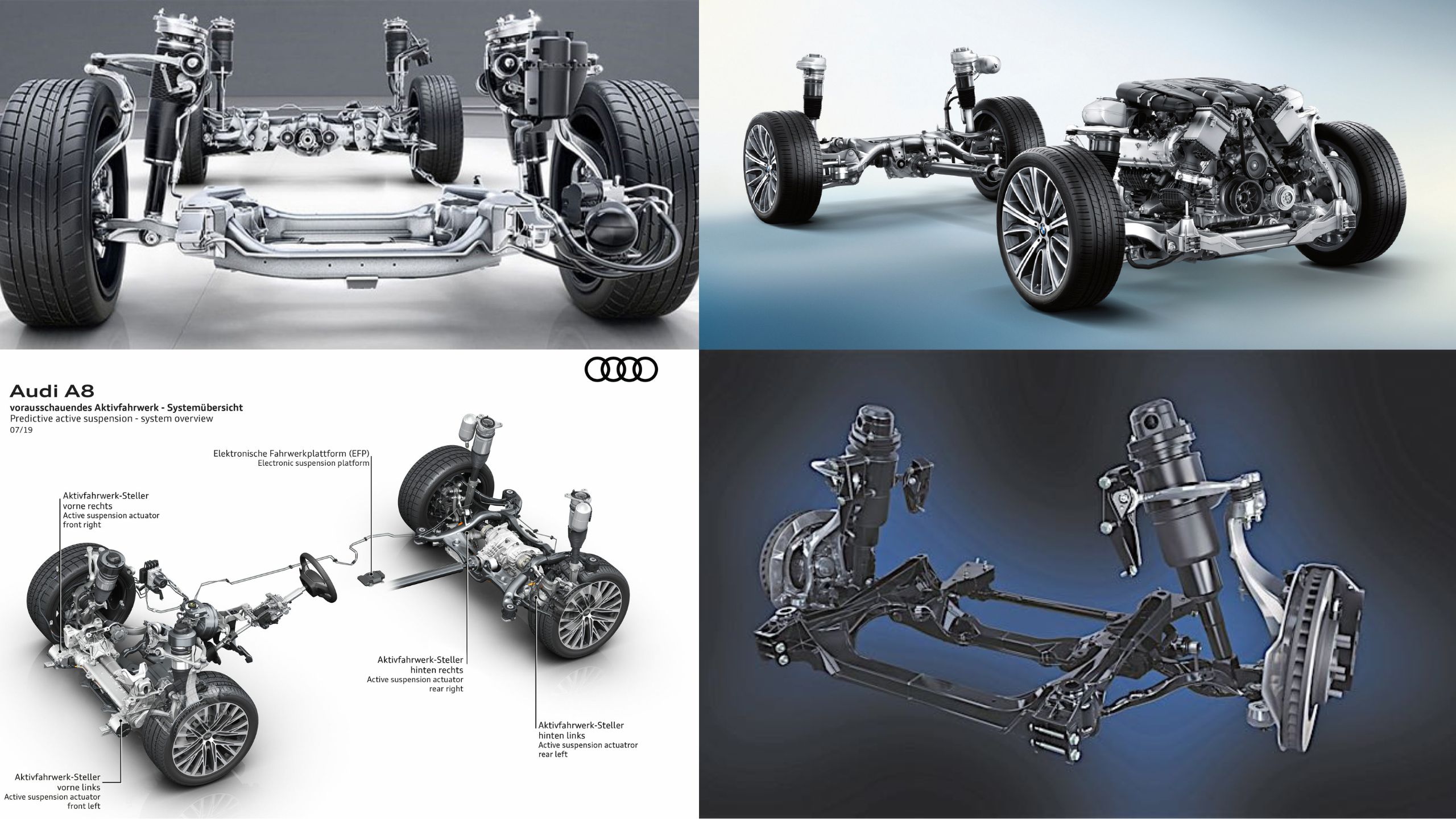Air suspension technology represents the pinnacle of automotive comfort and performance engineering, transforming the driving experience by providing unprecedented levels of ride adaptability and precision.
Unlike traditional steel spring suspensions, air suspension systems use compressed air to adjust vehicle height, damping, and load-handling characteristics in real-time, delivering an unparalleled blend of luxury, handling, and versatility.
Modern high-end vehicles equipped with sophisticated air suspension can automatically adapt to various driving conditions, road surfaces, and passenger loads.
These systems utilize an intricate network of air springs, sensors, compressors, and electronic control units that continuously monitor vehicle dynamics and make instantaneous adjustments.
Whether going through urban streets, cruising highways, or traversing challenging terrain, air suspension ensures optimal ground clearance, improved stability, and exceptional ride comfort.
The reliability of these systems has dramatically improved over the past decade, with manufacturers investing heavily in advanced materials, precision engineering, and robust design.
High-end luxury and performance vehicle manufacturers have transformed air suspension from a potentially problematic technology to a hallmark of automotive excellence.
By implementing redundant systems, using high-quality components, and developing sophisticated diagnostic capabilities, these manufacturers have created air suspension systems that offer both supreme comfort and remarkable long-term durability.
1. Mercedes-Benz S-Class Air Suspension System
The Mercedes-Benz S-Class represents the gold standard of air suspension technology, featuring the revolutionary AIRMATIC suspension system that has become synonymous with luxurious ride quality.
Introduced in its current generation, the system utilizes a complex network of air springs, adaptive dampers, and an advanced electronic control unit that continuously monitors and adjusts vehicle dynamics in milliseconds.
At the heart of the S-Class air suspension is a sophisticated pneumatic system with four independent air spring struts, each equipped with sensors that detect road conditions, vehicle load, and driving dynamics.
The system can raise or lower the vehicle by up to 50 millimeters, providing exceptional adaptability. In comfort mode, the suspension virtually eliminates road imperfections, creating a near-magical carpet-like ride that isolates passengers from external disturbances.
The AIRMATIC system goes beyond mere comfort, offering multiple driving modes that fundamentally transform the vehicle’s character.
In Sport mode, the air springs automatically lower the vehicle’s ride height by 10 millimeters, reducing the center of gravity and improving handling dynamics. The suspension’s electronic damping control can adjust the damping force for each wheel individually, providing unprecedented precision in ride control.
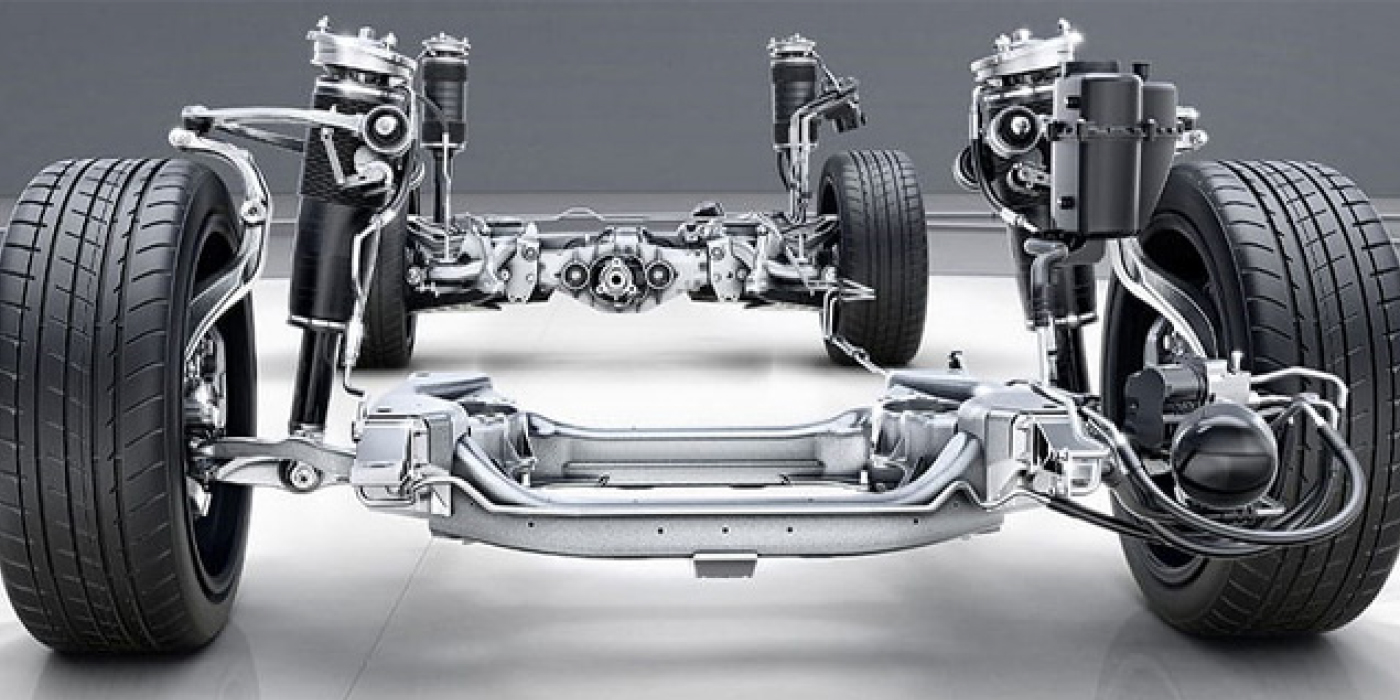
Reliability is a key strength of the S-Class air suspension. Mercedes-Benz has implemented multiple redundancy systems and uses high-quality, durable components that significantly reduce the likelihood of failure.
The air compressor is designed with enhanced durability, featuring improved cooling mechanisms and more robust seals. Additionally, the system includes advanced self-diagnostic capabilities that can predict potential issues before they become critical.
The suspension’s adaptive capabilities extend to load compensation, automatically adjusting ride height and stiffness based on passenger and cargo weight.
This ensures consistent performance regardless of vehicle loading conditions. The system also interfaces seamlessly with the vehicle’s advanced driver assistance systems, adjusting suspension characteristics to complement active safety features.
Mercedes has invested heavily in thermal management and component durability, with air springs constructed from multi-layer synthetic rubber compounds that resist environmental degradation.
The pneumatic lines use high-strength materials resistant to temperature fluctuations and mechanical stress, ensuring long-term reliability.
In real-world testing, the S-Class air suspension has demonstrated exceptional longevity, with many examples maintaining near-perfect performance beyond 100,000 miles. The system represents the pinnacle of suspension engineering, combining cutting-edge technology with meticulous German engineering precision.
2. BMW 7 Series Air Suspension System
The BMW 7 Series air suspension system exemplifies the brand’s commitment to combining athletic performance with luxurious comfort. Known as the Dynamic Damper Control system, this sophisticated suspension represents a technological tour de force in adaptive ride management.
BMW’s approach differs from competitors by integrating the air suspension more intimately with the vehicle’s dynamic control systems.
The system features five independent air spring elements that work in concert with electronically controlled dampers, creating a suspension that can instantaneously adapt to changing driving conditions.
Unlike traditional systems, the 7 Series’ air suspension uses predictive algorithms that anticipate road conditions before they’re encountered. Advanced sensors continuously analyze road surface, vehicle speed, and driving style, making preemptive adjustments to suspension characteristics.
This results in a remarkably smooth ride that feels almost prescient in its ability to mitigate road imperfections.
The suspension offers multiple driving modes Comfort, Sport, and Adaptive each dramatically transforming the vehicle’s character.
In Comfort mode, the air springs provide exceptional isolation, virtually eliminating road vibrations. Sport mode lowers the vehicle’s ride height by 20 millimeters, stiffens damping, and reduces body roll, transforming the luxurious sedan into a surprisingly capable performance machine.
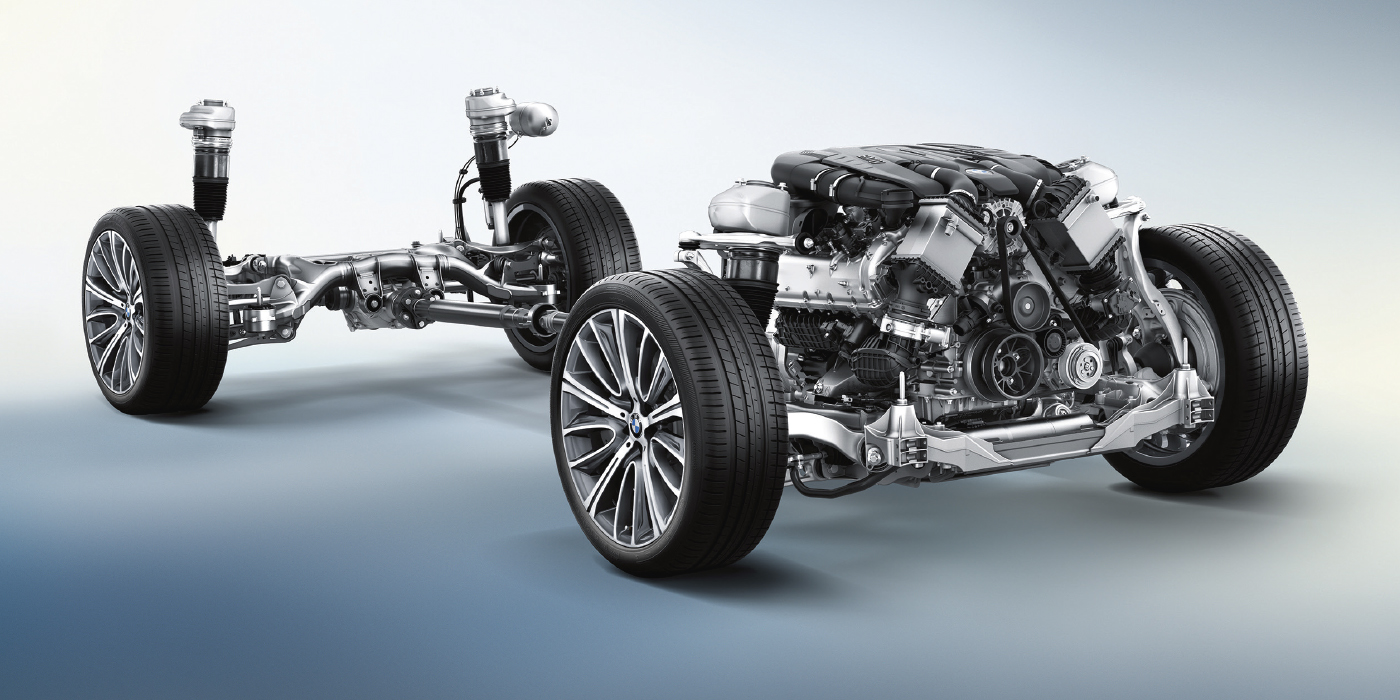
BMW has significantly improved the reliability of its air suspension through advanced materials and intelligent design. The air springs use multi-layer reinforced rubber compounds that resist degradation, while precision-manufactured air valves ensure consistent performance.
The system’s air compressor features enhanced cooling and more durable sealing, addressing historical reliability concerns.
An innovative feature is the system’s ability to automatically level the vehicle regardless of load, maintaining optimal ride height and handling characteristics. This is particularly useful when carrying passengers or cargo, ensuring consistent performance under varying conditions.
The suspension interfaces seamlessly with BMW’s xDrive all-wheel-drive system and advanced driver assistance technologies. It can adjust ride height for improved aerodynamics at high speeds and provide increased ground clearance in challenging driving conditions.
Thermal management is a critical consideration in the 7 Series’ air suspension design. The system can operate effectively in temperatures ranging from -40°F to 130°F, with specialized seals and lubricants that maintain performance across extreme environmental conditions.
Real-world reliability studies indicate that the latest generation of BMW 7 Series air suspension systems have significantly improved over previous iterations, with many vehicles maintaining excellent performance beyond 75,000 miles.
The combination of advanced materials, predictive algorithms, and rigorous testing has transformed the air suspension from a potential reliability concern to a hallmark of BMW’s engineering excellence.
3. Audi A8 Air Suspension System
Audi’s adaptive air suspension represents a pinnacle of engineering precision, seamlessly blending technological innovation with unparalleled ride comfort in the A8 luxury sedan. The system, known as Adaptive Air Suspension, utilizes a sophisticated pneumatic setup that redefines the boundaries between performance and luxury.
At the core of the Audi A8’s air suspension are electronically controlled air springs at each wheel, working in perfect harmony with adaptive dampers. The system can adjust ride height by up to 60 millimeters, providing exceptional versatility across different driving conditions.
Unlike conventional suspensions, Audi’s design uses multiple sensors that continuously monitor vehicle dynamics, road conditions, and driving style, making instantaneous adjustments that are virtually imperceptible to passengers.
The suspension offers four distinct driving modes: Comfort, Auto, Dynamic, and Individual. In Comfort mode, the system prioritizes ride smoothness, using advanced air spring technology to absorb road imperfections with remarkable efficiency.
The Dynamic mode transforms the vehicle’s character, lowering the ride height and stiffening damping characteristics to enhance handling precision and reduce body roll.
Reliability is a paramount concern in the Audi A8’s air suspension design. The company has invested heavily in component durability, utilizing multi-layer air springs constructed from advanced synthetic rubber compounds resistant to environmental degradation.
The pneumatic system features redundant air compressors and multiple fail-safe mechanisms that ensure continued operation even if individual components experience issues.
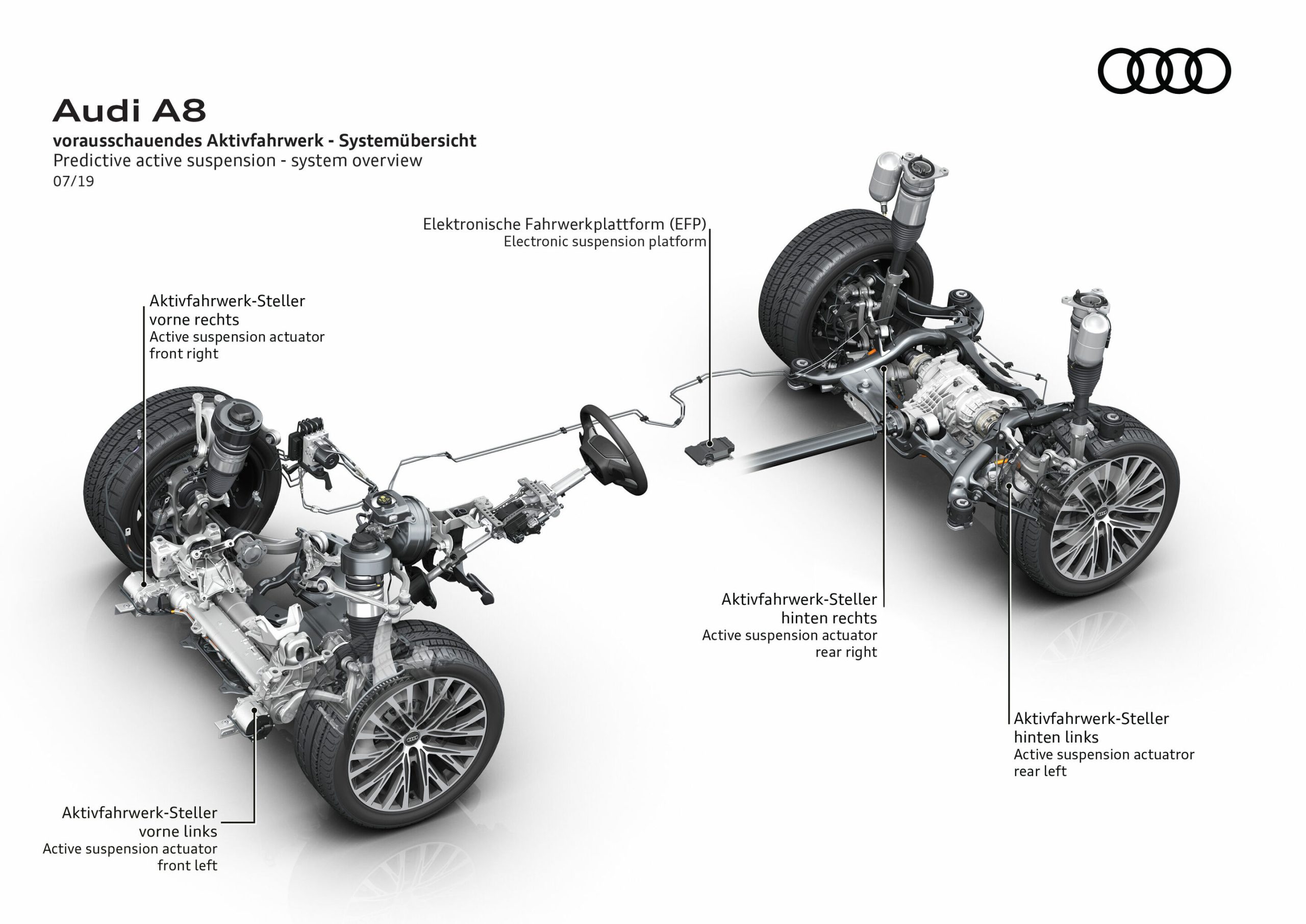
An innovative feature is the predictive active suspension, which works in conjunction with the vehicle’s navigation system. By anticipating road conditions through GPS data, the suspension can preemptively adjust, preparing for upcoming bumps or corners before they are encountered.
This predictive capability sets the Audi A8 apart from competitors, offering a truly intelligent suspension experience.
The system’s thermal management is equally impressive, with specialized seals and lubricants that maintain optimal performance across extreme temperature ranges.
From arctic conditions to desert heat, the air suspension maintains consistent performance and reliability.
Moreover, the Audi A8’s air suspension interfaces seamlessly with the vehicle’s advanced driver assistance systems. It can adjust ride height for improved aerodynamics at highway speeds, lower for enhanced stability during high-speed cornering, and raise for improved ground clearance in challenging terrain.
Long-term reliability studies demonstrate remarkable durability, with many Audi A8 models maintaining near-perfect suspension performance beyond 80,000 miles.
The combination of advanced materials, predictive technology, and meticulous German engineering has transformed air suspension from a potential reliability concern to a benchmark of automotive excellence.
4. Porsche Panamera Air Suspension System
Porsche’s approach to air suspension in the Panamera represents a masterclass in balancing performance with luxury, creating a system that defies traditional automotive engineering boundaries.
The Porsche Active Suspension Management (PASM) air suspension system is not merely a comfort feature but a core performance technology that defines the Panamera’s exceptional driving characteristics.
Unlike traditional luxury air suspensions that prioritize comfort, Porsche’s system is engineered with a performance-first philosophy.
The four-corner air suspension uses lightweight, high-strength air springs that can adjust ride height and stiffness with unprecedented precision.
Each air spring is coupled with adaptive dampers that can change their characteristics in milliseconds, allowing the Panamera to transform from a comfortable grand tourer to a track-ready performance machine instantaneously.
The suspension offers multiple driving modes that fundamentally alter the vehicle’s character. In Comfort mode, the air springs provide exceptional road isolation, absorbing imperfections with remarkable efficiency.
Switching to Sport or Sport+ mode dramatically changes the suspension’s behavior: the vehicle lowers by up to 25 millimeters, damping becomes significantly stiffer, and the entire chassis becomes more responsive to driver inputs.
Porsche has addressed historical reliability concerns through advanced engineering and material science.
The air springs use specially developed synthetic rubber compounds that resist environmental degradation and maintain consistent performance across extreme temperature ranges.
The pneumatic system features a robust air compressor with enhanced cooling mechanisms and multiple redundancy systems to prevent potential failures.
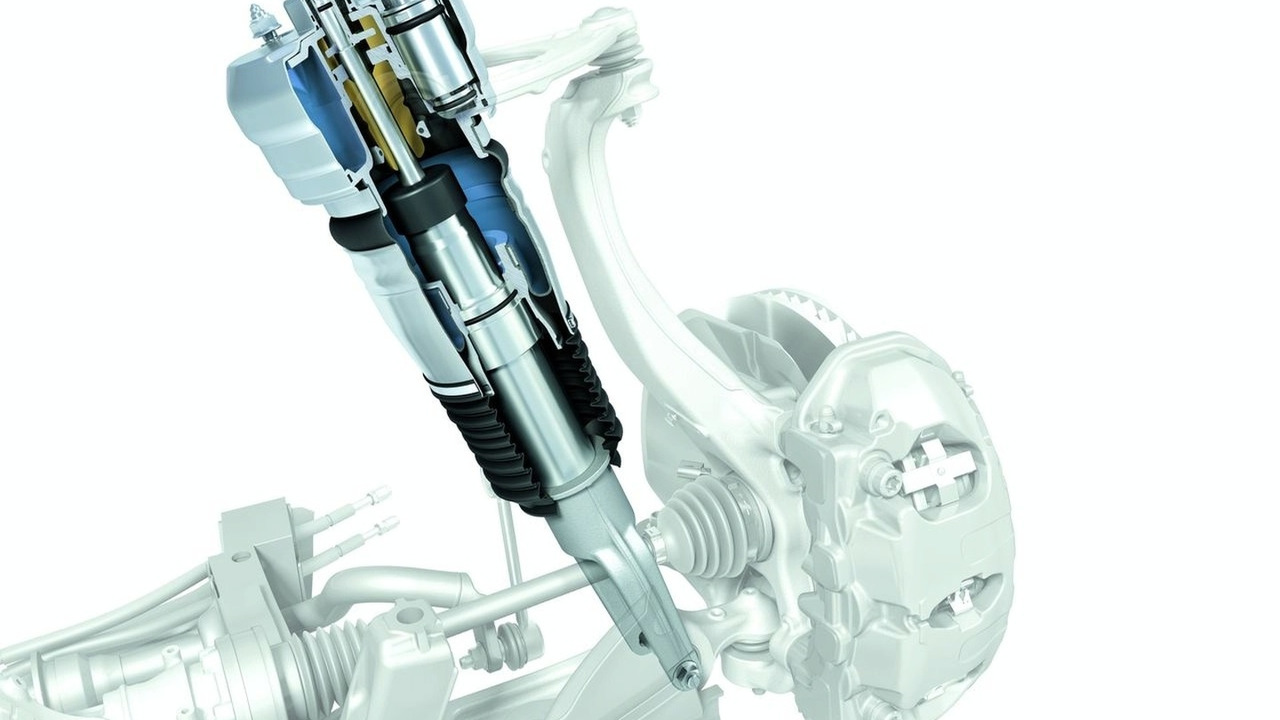
An innovative feature is the system’s active roll stabilization, which uses air suspension to counteract body roll during high-speed cornering.
By independently adjusting the air pressure in each spring, the Panamera can maintain a flat cornering stance while preserving ride comfort. This technology bridges the gap between luxury sedan comfort and sports car precision.
The suspension interfaces seamlessly with Porsche’s advanced all-wheel-drive system and torque vectoring technologies. It can dynamically adjust ride height and stiffness based on driving conditions, vehicle speed, and driver inputs.
At high speeds, the system automatically lowers the vehicle to improve aerodynamics and stability, while providing additional ground clearance at lower speeds.
Thermal management is a critical consideration in the Panamera’s air suspension design. Specialized sealing technologies and advanced lubricants ensure consistent performance from -40°F to 130°F, addressing one of the historical challenges of air suspension systems.
Real-world reliability data suggests that the latest generation of Porsche Panamera air suspensions demonstrate exceptional durability.
Many examples maintain near-perfect performance beyond 70,000 miles, a testament to Porsche’s commitment to engineering excellence and rigorous testing protocols.
Also Read: 10 Sports Cars That Are More Durable Than You Think
5. Range Rover Air Suspension System
Land Rover’s Range Rover air suspension represents the pinnacle of versatility, combining luxury sedan comfort with extraordinary off-road capability.
The Terrain Response 2 air suspension system is a technological marvel that redefines what’s possible in a luxury SUV, offering unprecedented adaptability across diverse driving environments.
Unlike conventional air suspension systems, Range Rover’s technology is specifically designed to handle extreme conditions while maintaining exceptional on-road comfort.
The system can adjust ride height by up to 100 millimeters, providing extraordinary ground clearance for off-road adventures and improved aerodynamics for highway driving.
This remarkable range of adjustment is achieved through four robust air springs that can independently manage vehicle height and stiffness.
The suspension offers multiple driving modes tailored to specific terrain types: General Driving, Dynamic, Comfort, Off-Road, and Wade modes.
In Off-Road mode, the system automatically raises the vehicle, increases wheel articulation, and adjusts damping characteristics to handle challenging terrain.
The Wade mode is particularly innovative, raising the vehicle to its maximum height and sealing critical components to allow safe water crossing up to 35.4 inches deep.
Reliability has been a focal point of Range Rover’s air suspension development. The company has invested heavily in component durability, using multi-layer air springs constructed from advanced synthetic rubber compounds resistant to environmental stress.
The pneumatic system features dual air compressors and multiple fail-safe mechanisms to ensure continued operation even in extreme conditions.
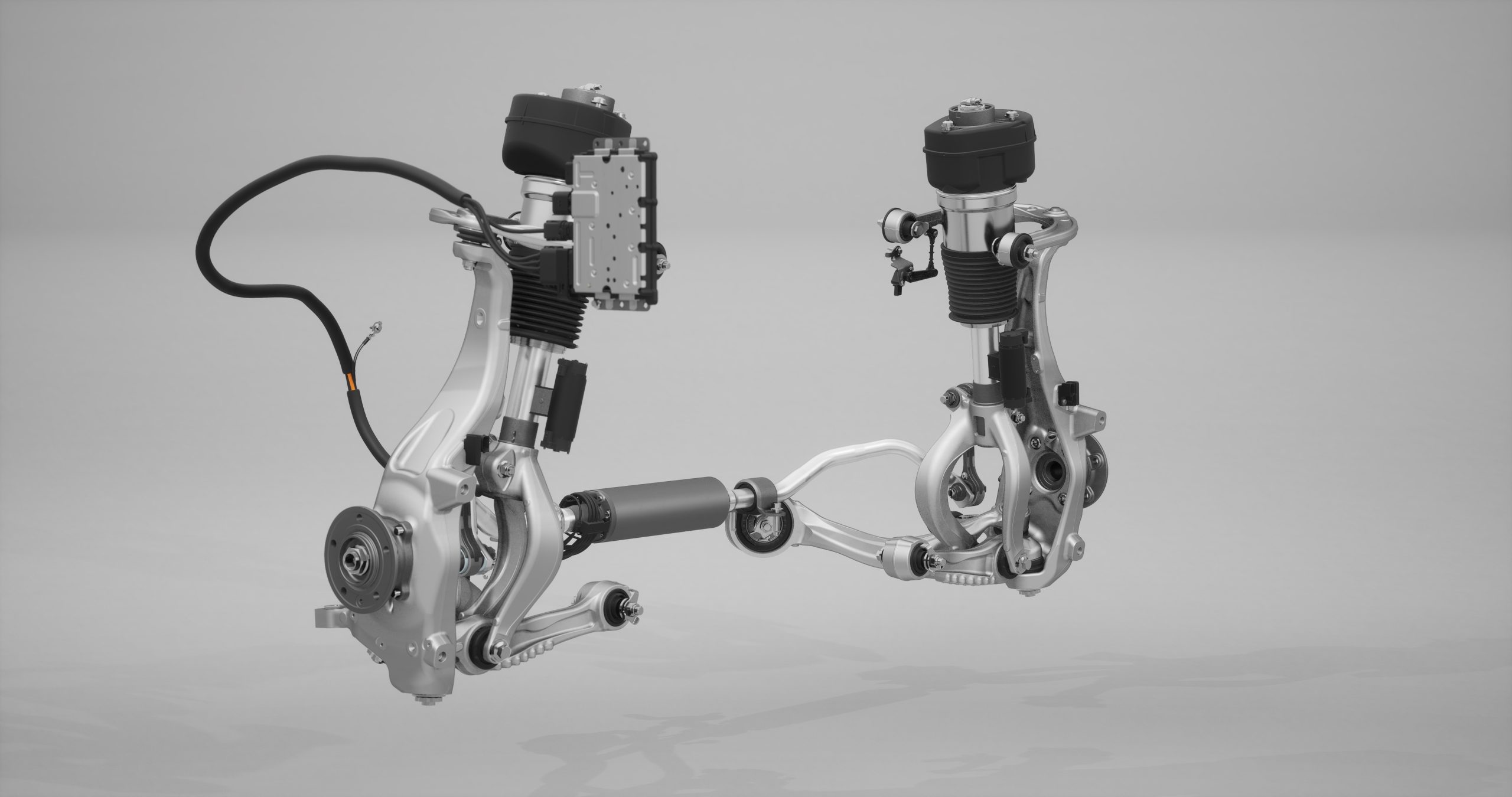
An exceptional feature is the suspension’s predictive capabilities. Advanced sensors continuously monitor road conditions, vehicle dynamics, and driving style, making instantaneous adjustments that optimize both comfort and performance.
The system can preemptively adjust suspension characteristics before encountering road imperfections, creating a remarkably smooth ride.
Thermal management is crucial in the Range Rover’s suspension design. Specialized seals and lubricants maintain optimal performance across temperature ranges from arctic cold to desert heat.
The system’s components are designed to withstand significant environmental challenges, from extreme temperatures to dust, mud, and water exposure.
The air suspension interfaces seamlessly with advanced traction control and driver assistance systems. It can dynamically distribute the load, maintain vehicle stability, and provide optimal ground contact across various surfaces. Whether going through urban streets or traversing challenging off-road terrain, the suspension adapts instantaneously.
Long-term reliability studies indicate impressive durability, with many Range Rover models maintaining excellent suspension performance beyond 70,000 miles.
The combination of advanced materials, sophisticated engineering, and rigorous testing has transformed air suspension from a potential reliability concern to a hallmark of luxury SUV excellence.
6. Lexus LS Air Suspension System
Lexus approaches air suspension with its characteristic blend of technological innovation and meticulous refinement, creating a system that epitomizes Japanese engineering precision.
The LS’s air suspension represents a harmonious integration of comfort, performance, and reliability that sets new standards in the luxury sedan segment.
The Lexus LS air suspension utilizes four electronically controlled air springs that work in concert with adaptive dampers, creating a suspension system capable of extraordinary ride quality.
Unlike more aggressive systems, Lexus prioritizes smooth, almost imperceptible adjustments that provide a floating-like driving experience. The system can adjust ride height by up to 40 millimeters, offering versatility without compromising the vehicle’s elegant profile.
Multiple driving modes allow subtle transformations of the vehicle’s character. Comfort mode provides exceptional road isolation, virtually eliminating external vibrations.
Sport mode subtly stiffens the suspension, reducing body roll and enhancing driving dynamics while maintaining the brand’s commitment to passenger comfort.
Reliability is a cornerstone of the Lexus approach to air suspension. The company’s legendary quality control is evident in every aspect of the system’s design.
Multi-layer air springs use specially developed synthetic rubber compounds resistant to environmental degradation. The pneumatic system features redundant components and advanced diagnostic capabilities that can predict and prevent potential issues before they occur.

An innovative feature is the suspension’s integration with Lexus’ advanced driver assistance technologies.
The system can dynamically adjust ride height and damping characteristics to complement active safety features, providing an additional layer of vehicle stability and passenger protection.
Thermal management represents another area of engineering excellence. Specialized seals and lubricants ensure consistent performance across extreme temperature variations, from freezing winters to scorching summers.
The air compressor features enhanced cooling mechanisms and more robust sealing to maintain long-term reliability.
The suspension interfaces seamlessly with the vehicle’s electronic systems, using multiple sensors that continuously analyze road conditions, vehicle dynamics, and driving style. This allows for predictive adjustments that are virtually imperceptible to passengers, creating a sense of effortless motion.
Long-term reliability studies demonstrate remarkable durability, with many Lexus LS models maintaining near-perfect suspension performance beyond 100,000 miles.
The combination of advanced materials, predictive technology, and Lexus’ renowned quality control has established the LS air suspension as a benchmark of reliability in the luxury sedan market.
7. Tesla Model S Air Suspension System
Tesla’s approach to air suspension in the Model S represents a perfect fusion of technological innovation and software-driven adaptability.
Unlike traditional mechanical systems, Tesla’s air suspension is fundamentally a digital technology that redefines vehicle dynamics through intelligent, predictive engineering.
The Model S air suspension uses four electronically controlled air springs that can adjust the ride height with remarkable precision.
What sets Tesla apart is the system’s ability to learn and adapt through over-the-air software updates, creating a suspension that continuously evolves and improves throughout the vehicle’s lifecycle.
Multiple driving modes allow dramatic transformations of the vehicle’s character. The standard mode provides a comfortable ride height and smooth characteristics.
The Low mode reduces aerodynamic drag for improved efficiency at highway speeds, while the Very Low mode enhances performance driving dynamics.
Owners can even create location-based height profiles, automatically adjusting suspension when approaching specific GPS coordinates.
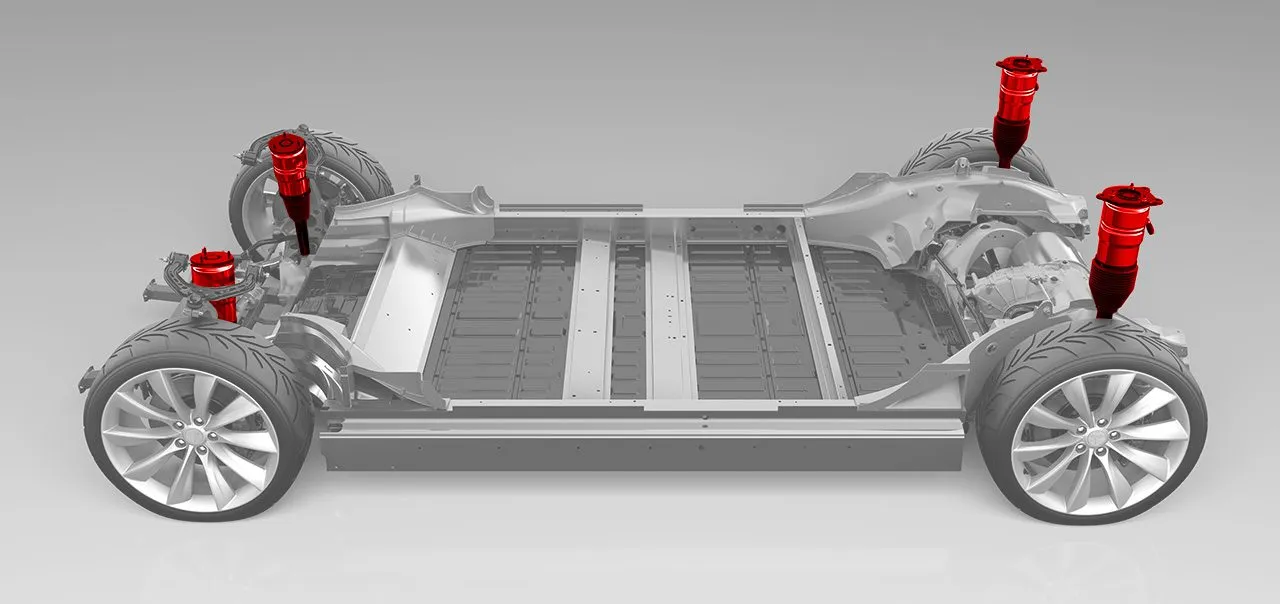
Reliability is engineered through simplicity and advanced software management. By reducing mechanical complexity and implementing sophisticated digital control systems, Tesla has created an air suspension with fewer potential failure points.
The air springs use high-strength materials resistant to environmental stress, while the electronic control systems provide comprehensive diagnostic capabilities.
An exceptional feature is the suspension’s integration with the vehicle’s autonomous driving technologies. The system can dynamically adjust ride height and stiffness based on driving conditions, vehicle speed, and navigation data.
This predictive capability allows for unprecedented levels of vehicle optimization. Thermal management is handled through advanced electronic systems that monitor and regulate component temperatures.
The air compressor and pneumatic systems are designed to operate efficiently across extreme environmental conditions, ensuring consistent performance in diverse climates.
The suspension’s software-driven architecture allows for continuous improvement. Tesla can enhance suspension characteristics, add new features, and address potential issues through wireless updates, a capability unprecedented in automotive engineering.
Long-term reliability data suggests impressive durability, with many Model S vehicles maintaining excellent suspension performance.
The combination of advanced materials, predictive software, and innovative engineering has established Tesla’s air suspension as a benchmark of technological innovation.
8. Bentley Continental GT Air Suspension System
Bentley’s approach to air suspension in the Continental GT represents the pinnacle of luxury automotive engineering, combining British craftsmanship with cutting-edge technological innovation.
The system is a masterpiece of precision engineering, designed to provide an unparalleled driving experience that seamlessly blends comfort and performance.
The Continental GT’s air suspension utilizes three-chamber air springs at each wheel, offering an extraordinary range of adjustment and complexity.
Unlike simpler systems, Bentley’s design allows for incredibly nuanced control of ride characteristics, enabling the vehicle to transition from a luxurious cruiser to a dynamic performance machine with remarkable ease.
Multiple driving modes transform the vehicle’s character dramatically. In Comfort mode, the suspension provides a carpet-like ride quality, virtually eliminating road imperfections.
Switching to Sport mode dramatically alters the suspension’s behavior, lowering the vehicle’s ride height, stiffening damping characteristics, and reducing body roll to enhance handling precision.
Reliability is paramount in Bentley’s engineering philosophy. The air springs use specially developed multi-layer synthetic rubber compounds resistant to environmental degradation.
Pneumatic lines feature advanced sealing technologies, while the air compressor includes enhanced cooling mechanisms and multiple redundancy systems to prevent potential failures.
An innovative feature is the suspension’s predictive capabilities. Advanced sensors continuously monitor road conditions, vehicle dynamics, and driving style, making instantaneous adjustments that optimize both comfort and performance.
The system can preemptively adjust suspension characteristics before encountering road imperfections. Thermal management represents another area of engineering excellence.
Specialized lubricants and sealing technologies ensure consistent performance across extreme temperature ranges, from arctic conditions to desert heat. The pneumatic system is designed to maintain optimal performance under diverse environmental challenges.
The suspension interfaces seamlessly with Bentley’s advanced driver assistance technologies, dynamically adjusting ride height and stiffness to complement active safety features.
At highway speeds, the vehicle automatically lowers to improve aerodynamics, while providing additional ground clearance in urban environments.
Long-term reliability studies indicate impressive durability, with many Continental GT models maintaining excellent suspension performance beyond 70,000 miles.
The combination of advanced materials, sophisticated engineering, and meticulous craftsmanship has transformed air suspension into a hallmark of Bentley’s automotive excellence.
9. Jaguar XJ Air Suspension System
Jaguar’s approach to air suspension in the XJ represents a perfect balance between traditional British luxury and modern technological innovation.
The system is engineered to provide an exceptionally smooth ride while maintaining the sporting character inherent in Jaguar’s design philosophy.
The XJ’s air suspension uses four electronically controlled air springs that work in concert with adaptive dampers, creating a system capable of extraordinary ride quality.
Unlike more aggressive luxury suspensions, Jaguar prioritizes a balance between comfort and dynamic performance, allowing the vehicle to float over road imperfections while maintaining exceptional handling characteristics.
Multiple driving modes enable subtle transformations of the vehicle’s character. Comfort mode provides an almost magical carpet-like ride, virtually eliminating external vibrations.
Dynamic mode subtly stiffens the suspension, reducing body roll and enhancing driving precision while preserving passenger comfort.
Reliability is a key focus in the XJ’s suspension design. The air springs use advanced synthetic rubber compounds resistant to environmental degradation.
The pneumatic system features redundant components and sophisticated diagnostic capabilities that can predict and prevent potential issues before they occur.
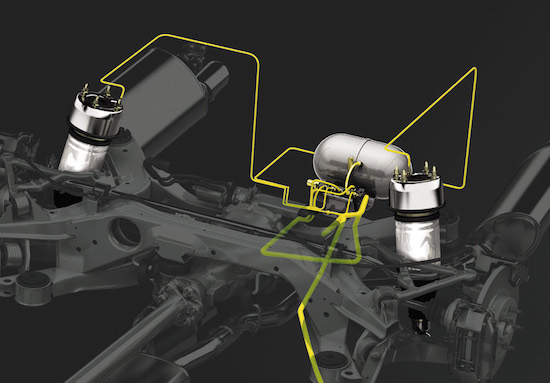
An innovative feature is the suspension’s integration with Jaguar’s advanced driver assistance technologies.
The system can dynamically adjust ride height and damping characteristics to complement active safety features, providing an additional layer of vehicle stability and passenger protection.
Thermal management represents another area of engineering excellence. Specialized seals and lubricants ensure consistent performance across extreme temperature variations.
The air compressor features enhanced cooling mechanisms and more robust sealing to maintain long-term reliability.
The suspension interfaces seamlessly with electronic systems, using multiple sensors that continuously analyze road conditions, vehicle dynamics, and driving style.
This allows for predictive adjustments that are virtually imperceptible to passengers, creating a sense of effortless motion.
Long-term reliability studies demonstrate remarkable durability, with many Jaguar XJ models maintaining near-perfect suspension performance.
The combination of advanced materials, predictive technology, and British engineering has established the XJ air suspension as a benchmark of luxury sedan performance.
10. Maserati Quattroporte Air Suspension System
Maserati’s approach to air suspension in the Quattroporte embodies the brand’s unique blend of Italian passion and engineering precision.
The system is designed to provide an exhilarating driving experience that balances luxurious comfort with sporty performance, reflecting the brand’s racing heritage.
The Quattroporte’s air suspension utilizes four electronically controlled air springs that work in harmony with adaptive dampers, creating a system capable of dramatic performance transformations.
Unlike more conservative luxury suspensions, Maserati’s design allows for extraordinary dynamic range, enabling the vehicle to transition seamlessly between refined cruiser and performance sedan.
Multiple driving modes dramatically alter the vehicle’s character. In Normal mode, the suspension provides a comfortable, refined ride.
Switching to Sport or Corsa modes lowers the vehicle’s ride height, stiffens damping characteristics, and reduces body roll, transforming the Quattroporte into a true performance machine.
Reliability has been a focal point of Maserati’s suspension development. The air springs use advanced multi-layer synthetic rubber compounds resistant to environmental stress.
Pneumatic lines feature sophisticated sealing technologies, while the air compressor includes enhanced cooling mechanisms and multiple redundancy systems.
An exceptional feature is the suspension’s adaptive capabilities. Advanced sensors continuously monitor road conditions, vehicle dynamics, and driving style, making instantaneous adjustments that optimize performance.
The system can preemptively adjust suspension characteristics before encountering road imperfections.
Thermal management is crucial in the Quattroporte’s suspension design. Specialized lubricants and sealing technologies ensure consistent performance across diverse temperature ranges.
The pneumatic system is engineered to maintain optimal performance under challenging environmental conditions.
The suspension interfaces seamlessly with Maserati’s advanced driver assistance technologies, dynamically adjusting ride height and stiffness to complement active safety features.
At high speeds, the vehicle automatically lowers to improve aerodynamics, while providing additional ground clearance in urban environments.
Long-term reliability studies indicate impressive durability, with many Quattroporte models maintaining excellent suspension performance.
The combination of advanced materials, sophisticated engineering, and Italian automotive passion has transformed air suspension into a hallmark of Maserati’s automotive excellence.
Also Read: 10 Supercharged Engines That Last Longer Than Expected

